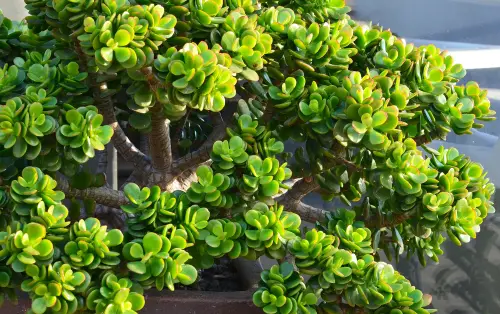Money plants, also known as Pachira aquatica, are a popular indoor plant that is believed to bring good luck and fortune. However, if you notice your money plant drooping, it can be a cause for concern.
While drooping is a common problem for money plants, it can be an indication of underlying issues that need to be addressed to keep your plant healthy and thriving.
Understanding the reasons why your money plant is drooping can help you take the necessary steps to revive it. There are several factors that can cause drooping, including environmental conditions, nutrient and soil conditions, plant diseases and pests, and physical changes and symptoms.
Proper care and maintenance of your money plant can also play a crucial role in preventing drooping and ensuring its longevity.
Key Takeaways
- Drooping is a common problem for money plants that can be an indication of underlying issues.
- Environmental conditions, nutrient and soil conditions, plant diseases and pests, and physical changes and symptoms can cause drooping.
- Proper care and maintenance of your money plant can prevent drooping and ensure its longevity.
Also see:
Understanding Money Plants
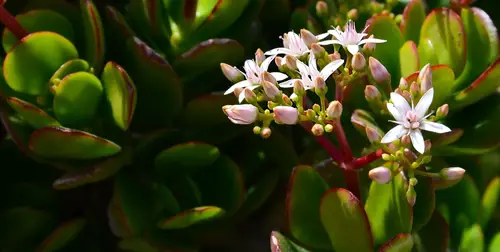
Money plants, also known as Pachira aquatica or the Chinese money plant, are popular houseplants known for their braided trunks and lush, green leaves. These plants are native to the swamps and wetlands of Central and South America, where they can grow up to 60 feet tall. Indoors, however, they typically reach a height of 6 to 8 feet.
Money plants are relatively easy to care for, making them a popular choice for indoor gardeners. They are tolerant of a wide range of conditions, including low light and infrequent watering. However, like all plants, they can develop problems if their needs are not met.
One of the most common issues with money plants is drooping leaves. This can be caused by a variety of factors, including overwatering, underwatering, and poor soil quality. It can also be a sign of more serious problems, such as root rot or pests.
To keep your money plant healthy and thriving, it’s important to understand its basic needs. The following table summarizes some of the key care requirements for money plants:
| Care Requirement | Description |
| Light | Money plants prefer bright, indirect light. They can tolerate lower light levels, but may not grow as quickly or produce as many leaves. |
| Watering | Money plants should be watered when the top inch of soil feels dry to the touch. Overwatering can lead to root rot, while underwatering can cause the leaves to droop. |
| Soil | Money plants prefer well-draining soil that is rich in organic matter. Avoid using heavy, compacted soils that can trap moisture and lead to root rot. |
| Fertilizer | Money plants benefit from regular fertilization during the growing season (spring and summer). Use a balanced, water-soluble fertilizer every 2-3 weeks. |
| Humidity | Money plants prefer moderate to high humidity levels. If your home is dry, consider using a humidifier or placing a tray of water near the plant. |
By providing your money plant with the right amount of light, water, and nutrients, you can help prevent drooping leaves and other common problems. If you do notice signs of stress, such as yellowing leaves or wilting stems, it’s important to take action promptly to address the issue.
With proper care, your money plant can thrive and bring a touch of green to your indoor space.
Why Is My Money Plant Drooping? – 3 Common Problems
If you notice your money plant drooping, it could be due to several reasons. Here are some common causes of drooping leaves and how to fix them.
1. Watering Issues
Watering issues are a common cause of drooping leaves in money plants. Overwatering or underwatering can both cause the leaves to droop. Overwatering can lead to root rot, which prevents the roots from absorbing water and nutrients, causing the leaves to droop and turn yellow.
Underwatering can cause the soil to dry out, leaving insufficient moisture for the roots to absorb, which can also lead to drooping leaves.
To fix watering issues, ensure that the soil is moist but not waterlogged. Water the plant when the top inch of soil is dry to the touch. Avoid letting the plant sit in water, as this can lead to root rot.
2. Temperature Stress

Temperature stress can also cause money plant leaves to droop. Money plants prefer temperatures between 60°F and 75°F. If the temperature drops below 50°F or rises above 85°F, the plant may become stressed, resulting in drooping leaves.
To fix temperature stress, move the plant to an area with a more suitable temperature. Avoid placing the plant near drafty windows or air conditioning units, which can cause temperature fluctuations.
3. Transplant Shock
Transplant shock can occur when a money plant is repotted or moved to a new location. The plant may experience stress due to the change in environment, resulting in drooping leaves.
To fix transplant shock, ensure that the plant is in a suitable location with adequate light and temperature. Avoid repotting the plant too often, as this can cause stress. Allow the plant to acclimate to its new environment before making any further changes.
By identifying and addressing the underlying cause of drooping leaves, you can help your money plant thrive and grow healthy foliage.
Role of Environment
The environment plays a crucial role in the growth and health of a money plant. Any changes in the environment can cause the plant to droop or even die. Here are some environmental factors that can affect the health of a money plant:
1. Humidity
Money plants prefer moderate to high humidity levels. Low humidity levels can cause the leaves to droop and curl. To increase humidity levels, one can place a tray of water near the plant or use a humidifier.
2. Temperature
Money plants prefer temperatures between 60-75°F (15-24°C). Sudden temperature changes can cause the leaves to droop. Avoid placing the plant near drafts, radiators, or heating vents.
3. Lighting
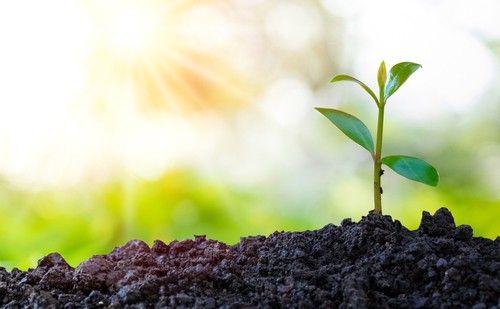
Money plants prefer bright, indirect light. Direct sunlight can scorch the leaves and cause them to droop. Low light levels can also cause the leaves to droop. If the plant is not receiving enough light, consider moving it to a brighter location or using artificial grow lights.
4. Watering
Overwatering or underwatering can also cause the leaves to droop. Ensure that the soil is moist but not waterlogged. Allow the top inch of soil to dry out before watering again.
5. Pests and Diseases
Pests and diseases can also affect the health of a money plant and cause the leaves to droop. Common pests include spider mites, mealybugs, and scale insects. Common diseases include root rot and leaf spot. Ensure that the plant is kept clean and free of pests and diseases.
Nutrient and Soil Conditions
One of the most common reasons for a drooping money plant is poor soil and nutrient conditions. The plant needs well-draining soil that is rich in nutrients to thrive. If the soil lacks nutrients, the plant will not be able to absorb enough water and nutrients to maintain its health, leading to drooping and wilting.
Poor soil drainage is another issue that can cause the plant to droop. If the soil does not drain well, it can become waterlogged, leading to root rot and other issues. To avoid this, make sure that the pot has drainage holes and that the soil is well-draining.
A lack of nutrients is another common cause of drooping in money plants. If the plant is not receiving enough nutrients, it will not be able to grow and thrive. Adding fertilizer to the soil can help provide the plant with the nutrients it needs to grow and stay healthy.
When it comes to soil, it is important to use a well-draining potting mix that contains perlite or other materials that help with drainage. This will help prevent the soil from becoming waterlogged and improve the plant’s overall health.
In terms of soil moisture, it is important to strike a balance. Overwatering can lead to waterlogged soil and root rot, while underwatering can cause the plant to dry out and wilt. Make sure to water the plant regularly and monitor the soil moisture levels to ensure that the plant is getting the right amount of water.
Plant Diseases and Pests

Money plants are susceptible to various diseases and pests that can cause them to droop. Here are some of the most common plant diseases and pests that can affect money plants:
1. Mealybugs
Mealybugs are small, soft-bodied insects that feed on the sap of plants. They can cause stunted growth, yellowing of leaves, and drooping of the plant.
Mealybugs can be identified by their white, cottony appearance on the leaves and stems of the plant. To get rid of mealybugs, wipe the plant with a cotton ball dipped in alcohol or insecticidal soap.
2. Scale
Scale insects are another common pest that can affect money plants. They are small, oval-shaped insects that attach themselves to the leaves and stems of the plant.
Scale insects can cause yellowing of leaves, stunted growth, and drooping of the plant. To get rid of scale insects, wipe the plant with a cotton ball dipped in alcohol or insecticidal soap.
3. Thrips
Thrips are tiny, slender insects that feed on the sap of plants. They can cause the leaves of the plant to curl, turn brown, and droop. Thrips can be identified by their long, narrow bodies and fringed wings. To get rid of thrips, spray the plant with insecticidal soap or neem oil.
4. Spider Mites
Spider mites are tiny, eight-legged pests that feed on the sap of plants. They can cause yellowing of leaves, stunted growth, and drooping of the plant. Spider mites can be identified by their web-like appearance on the leaves and stems of the plant. To get rid of spider mites, spray the plant with insecticidal soap or neem oil.
5. Aphids
Aphids are small, pear-shaped insects that feed on the sap of plants. They can cause stunted growth, yellowing of leaves, and drooping of the plant.
Aphids can be identified by their green, black, or brown color and their ability to cluster on the leaves and stems of the plant. To get rid of aphids, spray the plant with insecticidal soap or neem oil.
6. Fungus Gnats
Fungus gnats are small, black flies that are attracted to moist soil. They can cause damage to the roots of the plant, leading to drooping and stunted growth. Fungus gnats can be identified by their small size and their tendency to fly around the plant.
To get rid of fungus gnats, allow the soil to dry out between waterings and use yellow sticky traps to catch the adult flies.
7. Root Rot
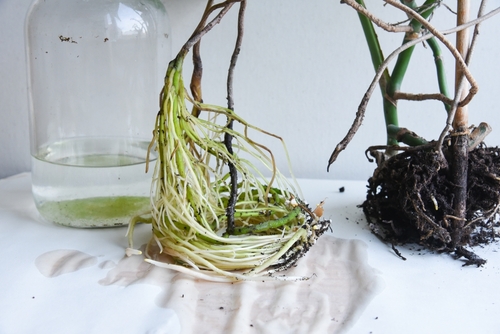
Root rot is a fungal disease that can affect money plants if they are overwatered or if the soil does not drain properly. It can cause the roots of the plant to rot, leading to drooping and eventual death of the plant.
To prevent root rot, make sure the plant is not overwatered and that the soil drains properly. If root rot is already present, remove the affected parts of the plant and repot it in fresh soil.
Physical Changes and Symptoms
Money plants can exhibit a variety of physical changes and symptoms when they are not healthy. Some common symptoms of a drooping money plant are yellowing leaves, wilting, and soft trunk.
Yellowing leaves are a common symptom of an unhealthy money plant. This can be caused by a variety of factors, including overwatering, underwatering, or lack of nutrients. If the leaves are yellowing, it is important to identify the underlying cause and address it promptly.
Wilting is another common symptom of a drooping money plant. This can be caused by a lack of water or too much water, as well as environmental factors such as temperature and humidity. It is important to monitor the plant’s water needs and adjust accordingly.
Leaves curling is another symptom of an unhealthy money plant. This can be caused by a lack of water, too much water, or environmental factors such as temperature and humidity. It is important to identify the underlying cause and address it promptly.
New growth and new leaves are indicators of a healthy money plant. If the plant is not producing new growth or new leaves, it may be a sign that it is not receiving the proper nutrients or care.
A soft trunk is another symptom of an unhealthy money plant. This can be caused by overwatering, underwatering, or environmental factors such as temperature and humidity. If the trunk is soft, it is important to identify the underlying cause and address it promptly.
Proper Care for Money Plants
Money plants are popular houseplants due to their attractive appearance and ease of care. Proper care is essential to keep them healthy and prevent issues like drooping leaves. Here are some tips for taking care of your money plant:
1. Watering
Watering is crucial for the health of your money plant. Overwatering or underwatering can cause drooping leaves. It’s important to water the plant when the soil is dry to the touch.
The frequency of watering depends on factors like the size of the plant, the type of pot, and the environmental conditions. A general rule of thumb is to water once a week, but it’s best to check the soil moisture level before watering.
2. Watering Schedule

Establishing a watering schedule helps maintain consistent moisture levels in the soil. It’s best to water in the morning, as this allows the plant to absorb the water throughout the day.
Avoid watering at night, as this can lead to fungal growth. If you’re unsure about the watering schedule, monitor the soil moisture level using a moisture meter or by checking the soil with your finger.
3. Repotting
Money plants prefer well-draining soil, and repotting is necessary when the soil becomes compacted or the roots outgrow the pot. Repotting also allows you to refresh the soil and remove any diseased roots.
It’s best to repot in the spring or summer when the plant is actively growing. Use a pot that is one size larger than the current pot, and add fresh soil to the bottom.
4. Pruning
Pruning helps maintain the shape and size of your money plant. It’s best to prune in the spring or summer when the plant is actively growing. Use clean, sharp scissors or pruning shears to remove any yellow or damaged leaves. You can also trim the stems to encourage bushier growth.
5. Moving to a New Location
Moving your money plant to a new location can cause stress and lead to drooping leaves. If you need to move the plant, do so gradually by moving it to a slightly brighter or darker location each day. This allows the plant to adjust to the new environment without shock.
6. Misting and Humidifier
Money plants prefer a humid environment, and misting or using a humidifier can help maintain the humidity levels. Misting the leaves with water once a day can help prevent dryness and keep the leaves healthy. Alternatively, you can use a humidifier to maintain a consistent humidity level.
7. Pebble Tray
A pebble tray is a simple way to increase humidity around your money plant. Fill a tray with pebbles and add water to the tray, making sure the water level is below the top of the pebbles. Place the pot on top of the pebbles, making sure the bottom of the pot is not in contact with the water.
Proper care is essential for the health of your money plant. By following these tips, you can prevent issues like drooping leaves and keep your plant healthy and attractive.
Understanding the Age Factor
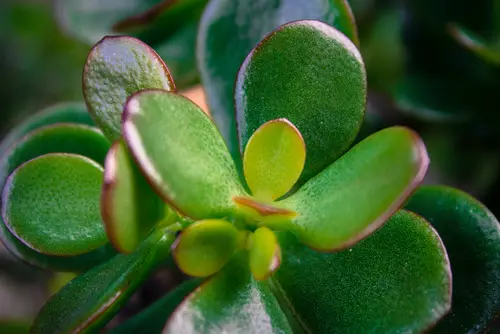
Money plants, like any other plant, go through a natural aging process. As they age, they tend to lose their vigor, and their growth slows down. This can cause the leaves to droop, and in some cases, they may even fall off.
Age-related drooping is more common in mature plants, which have been growing for several years. As the plant grows older, it becomes less efficient at absorbing nutrients from the soil. This can lead to stunted growth, which can cause the plant to droop.
Another factor that can contribute to age-related drooping is rootbound. When a plant becomes rootbound, its roots have grown too large for the pot, and there is no more room for them to grow. This can cause the plant to become stressed and can lead to drooping leaves.
If a money plant is showing signs of age-related drooping, it is important to take steps to help it recover. One way to do this is to repot the plant into a larger container. This will give the plant more room to grow and will allow it to absorb more nutrients from the soil.
It is also important to ensure that the plant is getting the right amount of water and nutrients. Overwatering can cause root rot, which can contribute to drooping leaves. Underwatering, on the other hand, can cause the plant to become dehydrated, which can also lead to drooping leaves.
The Role of Luck and Belief
Money plants, also known as Pachira aquatica or pilea peperomioides, are believed to bring good luck and fortune to those who own them. This belief has been around for centuries and is deeply rooted in various cultures around the world.
Some people believe that the more leaves a money plant has, the more wealth and prosperity it will bring to its owner.
While there is no scientific evidence to support the belief that money plants bring good luck, many people still choose to keep them in their homes and offices. The belief in the power of money plants is often passed down from generation to generation, and it has become a popular tradition in many cultures.
For those who believe in the power of money plants, the appearance of a drooping plant can be concerning. They may worry that their luck is changing or that they have done something wrong to upset the plant.
However, it is important to remember that there are many reasons why a money plant may droop, and not all of them are related to luck or belief.
One reason why a money plant may droop is that its base is not strong enough to support its weight. Money plants can grow quite tall, and if they are not adequately supported, they may begin to droop or lean to one side. Adding a stake or support to the base of the plant can help to keep it upright and prevent drooping.
Another reason why a money plant may droop is that it is not getting enough water. Money plants require regular watering, and if they are not watered enough, their leaves may begin to droop and wilt. It is important to ensure that the soil around the plant is moist but not waterlogged, as too much water can also cause drooping.
Frequently Asked Questions

What causes money plant leaves to droop?
There are several reasons why money plant leaves may droop. The most common causes are underwatering, overwatering, temperature stress, low humidity, and nutrient deficiency.
If you notice your money plant leaves drooping, it’s important to identify the cause and take action to correct it.
Why do money tree leaves droop and curl?
Money tree leaves can droop and curl due to a lack of water or too much water. Overwatering can cause root rot, which can lead to drooping and curling leaves. Temperature stress, low humidity, and nutrient deficiency can also cause money tree leaves to droop and curl.
How can I save my drooping money plant?
To save a drooping money plant, you need to identify the cause of the drooping and take appropriate action. If the plant is underwatered, water it thoroughly and allow excess water to drain away.
If the plant is overwatered, reduce watering and improve drainage. If the plant is suffering from temperature stress, move it to a more suitable location.
If the plant is suffering from low humidity, increase humidity levels by misting the leaves or using a humidifier. If the plant is suffering from nutrient deficiency, fertilize it with a suitable plant food.
What should I do if my Chinese money plant is drooping?
If your Chinese money plant is drooping, it may be due to underwatering, overwatering, or temperature stress. Check the soil moisture level and adjust watering accordingly.
If the plant is overwatered, reduce watering and improve drainage. If the plant is suffering from temperature stress, move it to a more suitable location.
Why are my pilea leaves drooping and falling off?
Pilea leaves can droop and fall off due to several reasons, including overwatering, underwatering, temperature stress, low humidity, and pest infestation.
Check the soil moisture level and adjust watering accordingly. If the plant is overwatered, reduce watering and improve drainage. If the plant is suffering from temperature stress, move it to a more suitable location.
Increase humidity levels by misting the leaves or using a humidifier. Check for pest infestations and treat accordingly.
Is it possible to fix a drooping plant?
Yes, it is possible to fix a drooping plant if you identify the cause of the drooping and take appropriate action. Watering the plant correctly, improving drainage, adjusting temperature and humidity levels, and fertilizing with a suitable plant food can all help to revive a drooping plant.

